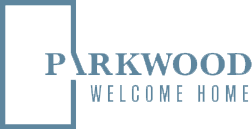To avoid having unrealistic expectations about the price of a timber door, you should know the factors that affect its price:
- The style influences the base price first and foremost because it determines how much timber is needed to create the door or how much time it takes to make it.
- Timber type – The cost of timber is different depending on what type of timber it is. It should come as no surprise that paint quality pine is the cheapest option and stain quality cedar is the most expensive, with other options falling somewhere in between.
- Glass – The base price for timber doors does not include glass, therefore, what glass you choose will affect how much the door will cost, with clear single-glazed glass being the most affordable option. Although you have the option of choosing the door without glass, most people choose to get it pre-installed, so they have less to arrange after receiving the door.
- Size – the larger a door is, the more expensive it will be. The base price of a timber door is set at door size 2000×860, meaning that any size at or under the base price remains the same price, but then as you get larger sizes additional costs are added to the door.
Some other factors to consider when buying a door that will increase the cost are:
- You’ll need a lock to secure your door. A variety of options are available, including grip-sets, lever handles, pull handles, and digital locks. Many of these options can also be combined into one set.
- Machining for the lock can either be done while the door is being made or on site.
- Depending on your needs, you may decide you want other hardware on your door. For instance, an eye viewer, false hinges or possibly a cat flap. Some of these options may require further machining.
- Finishing your door – whether you decide to paint or stain your timber door, this will be an additional cost. Parkwood offers the primer/sealer coat for timber doors; all other coats must be applied after the door has been received. Keep in mind that a timber door must be painted or stained on all six sides.
- Installation – unless you are confident that you can install the door on your own, you need to be aware that installation is an additional expense you should budget for.
- Additional warranty – The basic warranty on a door only covers the replacement of the door as it was originally ordered (for instance, if you had your door machined for hardware this is covered in the basic warranty). Whereas through Parkwood you can choose to upgrade your warranty to ‘Warranty Plus’ which additionally includes finishing and fitting of the door up to $500 but this does come at a small cost.


